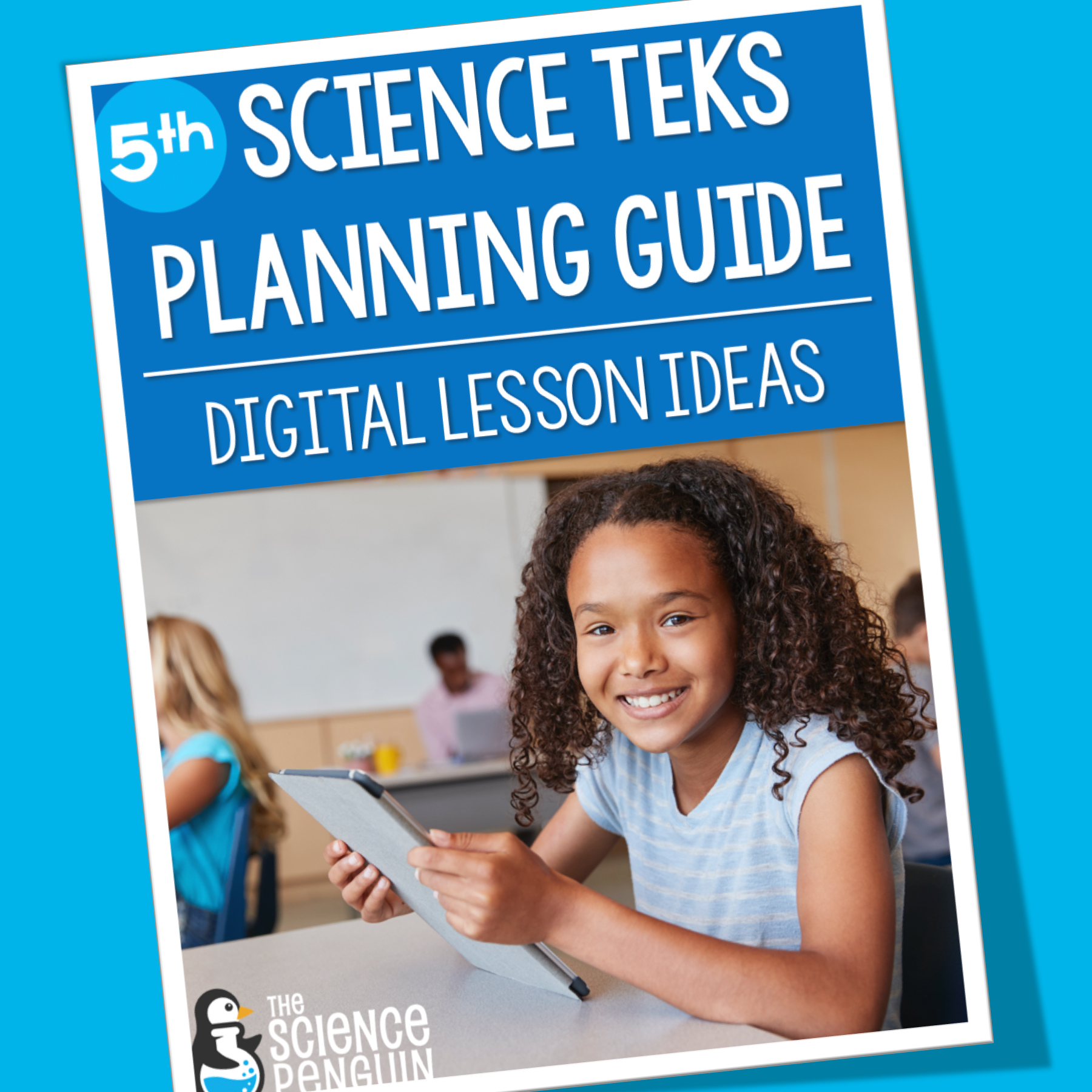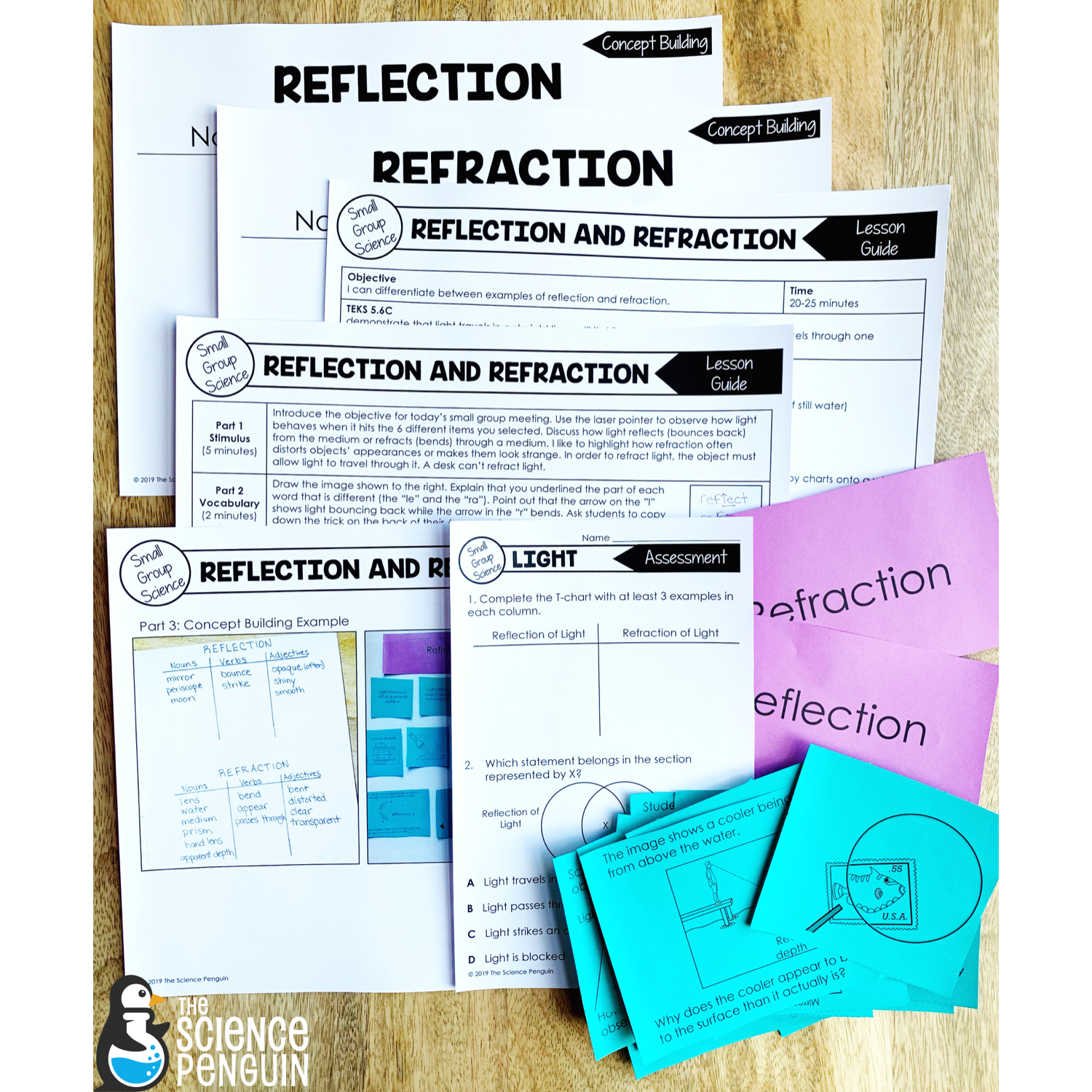Introducing Hands-on at Home Science for Upper Elementary

Hands-on at Home is designed for simple home investigations during virtual learning. You can also use these activities in a socially distanced classroom. Students can still get the experience of hands-on science without having to share materials.
When designing lessons for digital learning, I adapted the 5E Model for home use.
Want to access the year-long digital plans for 4th or 5th grade? Join my Facebook group, Science Penguin Huddle.


Engage
Each topic begins with an Engage lesson. Ideally through synchronous instruction, engage students in the ideas of the new lesson using a demonstration or read-aloud.

Explore
Next, students are given the opportunity to explore this new topic. Explore activities I have created are:
- Scavenger Hunts
- Free Hands-on at Home explorations
The free Hands-on at Home explorations include teacher directions, a materials list, a student page in Google Slides, and discussion questions.
There will be more activities added throughout the year! 
Access all Hands-on at Home activities: Check them out on TpT

When planning for hands-on activities at home, perhaps you can send home a bag with a few simple materials . Here’s an example of a bag for at Matters & Mixtures Unit. You can make a kit for about $3 per student, depending on what you include!


With these simple items, you’ve got:
- Chex Mix for Engage in a lesson on mixtures
- Honey, salt, pepper, powdered lemonade mix, tea bag, and sugar (or sugar substitute because that’s what I had lying around from visitors) for testing solubility or making solutions
- A magnet (even a simple magnet from the craft store or a refrigerator magnet) for testing magnetism or separating mixtures
- Plastic cups for investigations
- Candy for testing the speed of dissolving in water at different temperatures
- Creamer pod for making ice cream during changes to matter (I considered adding a bag of chocolate chips but in the hot sun they’d be melted before the lab
 )
) - A baggie with a mixture of cheap things I had lying around: glass vase filler, Q-tips, and metal paper clips
- A ruler and a piece of string for measuring
Access all Free Hands-on at Home activities: Check them out on TpT
Explain
For the Explain part of the topic, I have two recommendations.
- Use the Slides & Notes through recorded video or synchronous instruction.
- Use the Go Digital! Interactive Science Notebook as independent activities.
Slides & Notes
The Slides & Notes will save you time in finding all the information and images to teach students new information and making differentiated notes. It’s already done for you!
4th Grade Slides & Notes: See it on TpT
5th Grade Slides & Notes: See it on TpT

Go Digital! Interactive Science Notebook
The notebook is truly amazing. It is ready for students to use independently. They can access videos and listen to recorded audio of the text. They won’t need to look for information anywhere else!
Every lesson includes background text read aloud and varied activities. At the end of every lesson, students have the opportunity to reflect on or extend their learning in the way they choose. YES for student choice!
Take a look: See it on TpT
Take a look: See it at my store



Elaborate
After students have had the opportunity to make sense of the new topic, it’s time to elaborate. This is where Digital Inquiry comes in!
Students use the resources provided throughout the activity to answer a question and write a written response. This resource is differentiated at 3 levels so each student can get the right amount of scaffolding.
Take a look: See it on TpT
Take a look: See it in my store

Evaluate
At the end of your unit, assess students’ understanding using vocabulary quizzes and content quizzes.
Assessments are available in printable form and Google Forms for auto-grading. Here’s what I currently have available.
3rd Grade Vocabulary Assessments: See it on TpT
4th Grade Assessments Bundle: See it on TpT
5th Grade Assessments Bundle: See it on TpT

Extra Support
Here are a few tools for offering extra support to students virtually.
Small Group Science
While designed for small group instruction in-person, you can still print out these activities and show them to students over a small group synchronous video learning set-up.
Take a look: See it on TpT
Take a look: See it on my site

Digital Vocabulary Lessons
These lessons in Google Forms teach students vocabulary for 23 different topics. There are questions embedded throughout to check for understanding.
Take a look: See it on TpT
Take a look: See it on my site

All Year Bundles
If you want all the resources that you might need, definitely take a look at the bundles.
Take a look! 4th Grade on TpT
Take a look! 4th Grade at my store (includes payment plans)

Take a look: 5th Grade on TpT
Take a look: 5th Grade at my store (includes payment plans)

Don’t Forget!
Want to access the year-long digital plans for 4th or 5th grade? Join my Facebook group, Science Penguin Huddle.

The post Introducing Hands-on at Home Science for Upper Elementary appeared first on The Science Penguin.